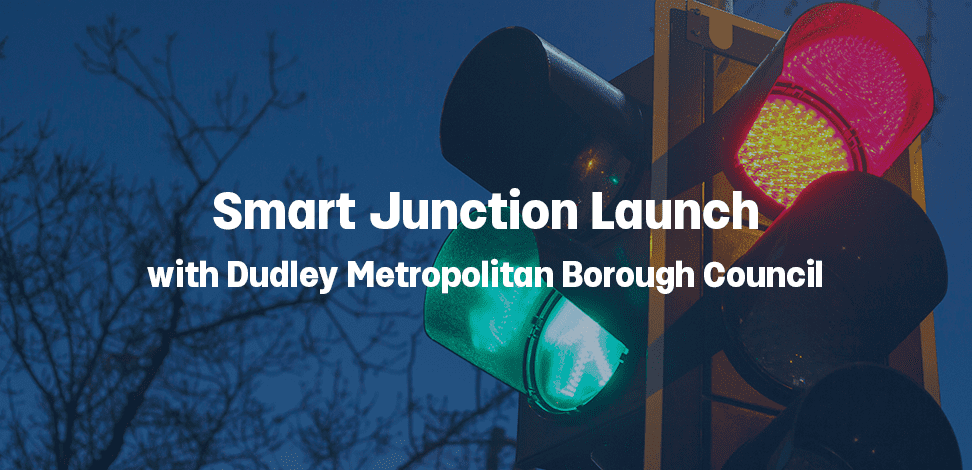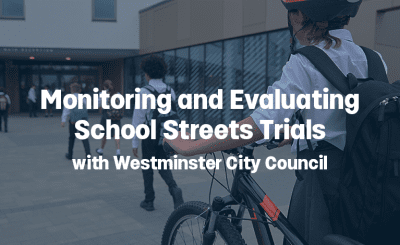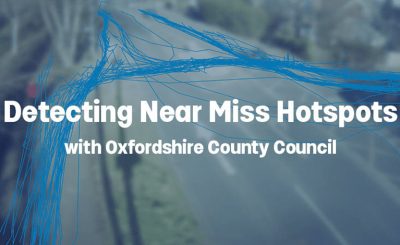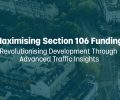How Dudley Metropolitan Borough Council used traffic data to select the prime location for VivaCity’s Smart Junction solution
Using data gathered by VivaCity’s AI-powered computer vision sensors, Smart Junctions optimise traffic signalling to reduce delay, improve air quality and keep cities moving. In this blog we look at how Dudley Metropolitan Borough Council (MBC) used traffic data to decide the prime junction location for a VivaCity Smart Junction.
Designing a Smart Junction network for safer active travel
This case study explores the investigation of the data collected by VivaCity’s network of sensors in order to identify the junction that will deliver the most value for Dudley MBC by improving journey quality of all road users.
Dudley Metropolitan Borough Council (MBC) faces a persistent issue with congestion within Brierley Hill including the Merry Hill Shopping Centre, impacting journey time reliability and creating significant delays which are believed to be negatively impacting the area’s regeneration and growth.
To tackle this Dudley MBC installed a network of VivaCity’s AI sensors covering both the inner and outer cordon of Brierley Hill to capture vehicle and active travel, including buses, cyclists and pedestrians, as well as measure overall congestion using ANPR-based Journey Times data.
Data was the first stage of the journey for Dudley MBC, who are piloting a VivaCity’s Smart Junction solution at an existing signalised junction to proactively address congestion challenges and promotion of active travel by optimising signal control.
Dudley Metropolitan Borough Council:
Using transport data to deploy the smartest Smart Junction
The road to Dudley’s first Smart Junction is paved in data
Data was the first stage of the journey for Dudley MBC, who are piloting a VivaCity’s Smart Junction solution at an existing signalised junction to proactively address congestion challenges and promote active travel by optimising signal control.
Assessment area
To identify the most suitable junction for the pilot project, analysis included both qualitative and quantitative data.
- Quantitative analysis explored overall demand, Journey Times and active travel volumes
- Qualitative analysis assessed strategic factors and other areas such as as potential for improvement
The analysis focused on evaluating three junctions in the inner cordon assessment area in Brierley Hill. A fourth junction was identified by the client, but was excluded from the selection as it layed outside the main assessment area.
A total of ten sensors with ANPR capabilities were used to explore overall demand and measure journey times through the different junctions. Additional sensors closer to the junctions were used to analyse active travel volumes.
Smart Junction pilot assessment area in Brierley Hill
Analysis findings
Demand across the network is relatively evenly spread
High level analysis of motorised traffic across the network found that demand is relatively evenly spread. On weekdays, motorised traffic counts peak in the morning at 8am and remain almost unchanged with a slight peak in the afternoon at 5pm. The high street records lower volumes of motorised traffic due to road works reducing traffic flows.
Average hourly motorised vehicles on weekdays, 04/01/2023 - 27/02/2023
Junction 1 and 3 have the highest levels of motorised traffic, but journey times at junction 1 are impacted to a greater extent
On weekdays, Junction 3 had the highest level of demand, peaking at an average hourly count of 2,072 at 16:00, whilst Junction 2 has the lowest levels of motorised traffic. All three junctions show a notable morning peak at 8:00 before dropping off late morning.
Although Junction 1 did not have the highest level of demand, its journey times were impacted most. At 15:00 journey times through the junction were 2.31 time higher than the baseline, ie. the lowest journey times recorded during daytime. This could be due to the routes selected for the analysis or the junction layout and existing signal control system.
Motorised traffic volumes and journey times by junction on weekdays, 04/01/2023 to 15/03/2023
Journey times through a junction are compared against the minimum journey time recorded between 07:00 and 19:00 (=baseline)
On weekends, demand was the same across the three sites, however Junction 2 had notably higher journey times, perhaps due to weekend trips to the ASDA car park either to visit the store or the nearby high street.
Motorised traffic volumes and journey times by junction on weekends, 04/01/2023 to 15/03/2023
Journey times through a junction are compared against the minimum journey time recorded between 07:00 and 19:00 (=baseline)
Junction 1 records the highest levels of pedestrians
When exploring pedestrian volumes at the different locations, Junction 1 recorded the highest overall pedestrian demand both during weekdays and on weekends. There were distinct peaks on weekdays at the site, reaching 127 pedestrians in the morning (8:00) and up to 150 in the afternoon (15:00) linked to nearby school opening and closing times. Weekend demand peaks at around midday suggesting the area is used by shoppers on foot.
Junctions 2 and 3 had overall lower demand and slightly different patterns to junction 1 with three peak periods on weekdays in the morning, midday and evening. Note that fewer countlines for junction 2 might contribute to lower pedestrian volumes.
Average hourly pedestrian counts by junction, 04/01/2023 to 16/03/2023
Qualitative analysis identified Junction 1 as the most strategic fit
The four junctions were assessed across a range of factors:
- Strategic: what is the benefit for business case development (inner cordon and competing systems)
- Potential for journey time (JT) improvement: based on saturation and the current system
- Isolation: how impacted will this site be by other junctions that are close by
- Active Travel: is there potential to benefit pedestrians/cyclists
- Bus Prioritisation: what is the potential for a public transport benefit
Junction 1 scored the highest in the qualitative assessment and was identified as the best overall fit by Dudley MBC. This was driven by strategic factors as well as the potential for active travel benefit.
Overview of strategic factors and benefits by junction location
Smart Junction pilot to kick-off for the selected junction
Based on the initial analysis, Junction 1 (Venture Way/Mill Street) was selected as the recommended pilot junction for deploying VivaCity’s Smart Junction solution. The pilot aims to utilise emerging technologies to take proactive steps towards reducing congestion and improving journey quality for all road users.
Motorised traffic demand at Junction 1 is one of the highest across the sites examined and the levels of congestion are the greatest when comparing journey times to baseline data. It also recorded the highest volumes of cyclists and pedestrians compared to other junctions.
This represents an opportunity for targeting multimodal prioritisation and trade-offs in performance between different road users, particularly as the junction is often saturated by motor vehicles during peak hours and throughout the day. There is also a road safety and active travel benefit for school children crossing a main road which VivaCity’s AI based sensors will be able to detect and optimise for.
Following the junction selection, the Smart Junction pilot will kick off in May with a 6-month delivery timeline. As part of the project, VivaCity and Dudley MBC will assess the benefits provided to the Venture Way/Mill Street junction.
Speak to our team about VivaCity
Smart Signal Control
Learn more about how Smart Signal Control works and discover its benefits
You might also be interested in:
Our Solutions | Our Products | Other News & Case Studies | About us









